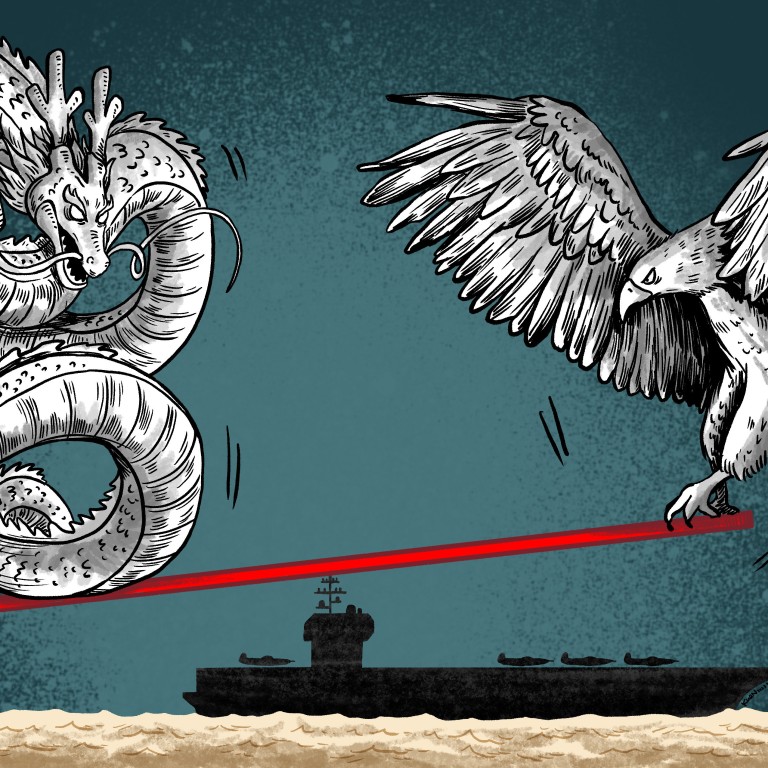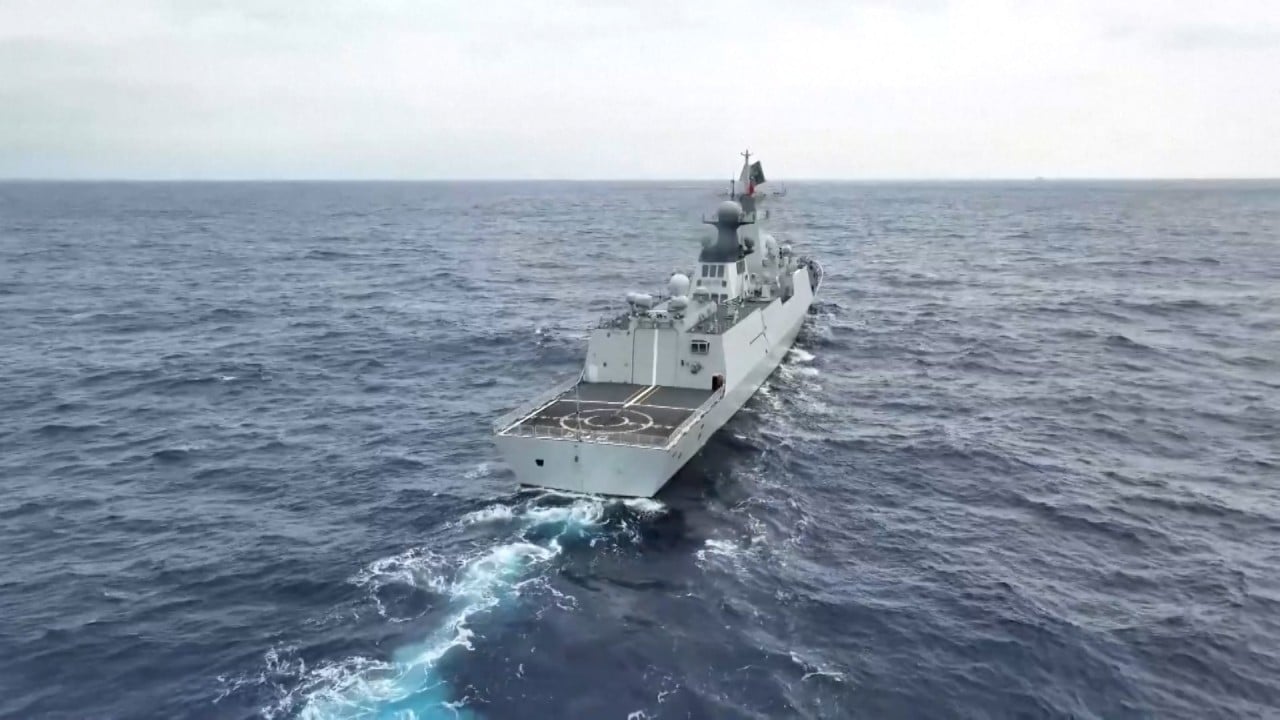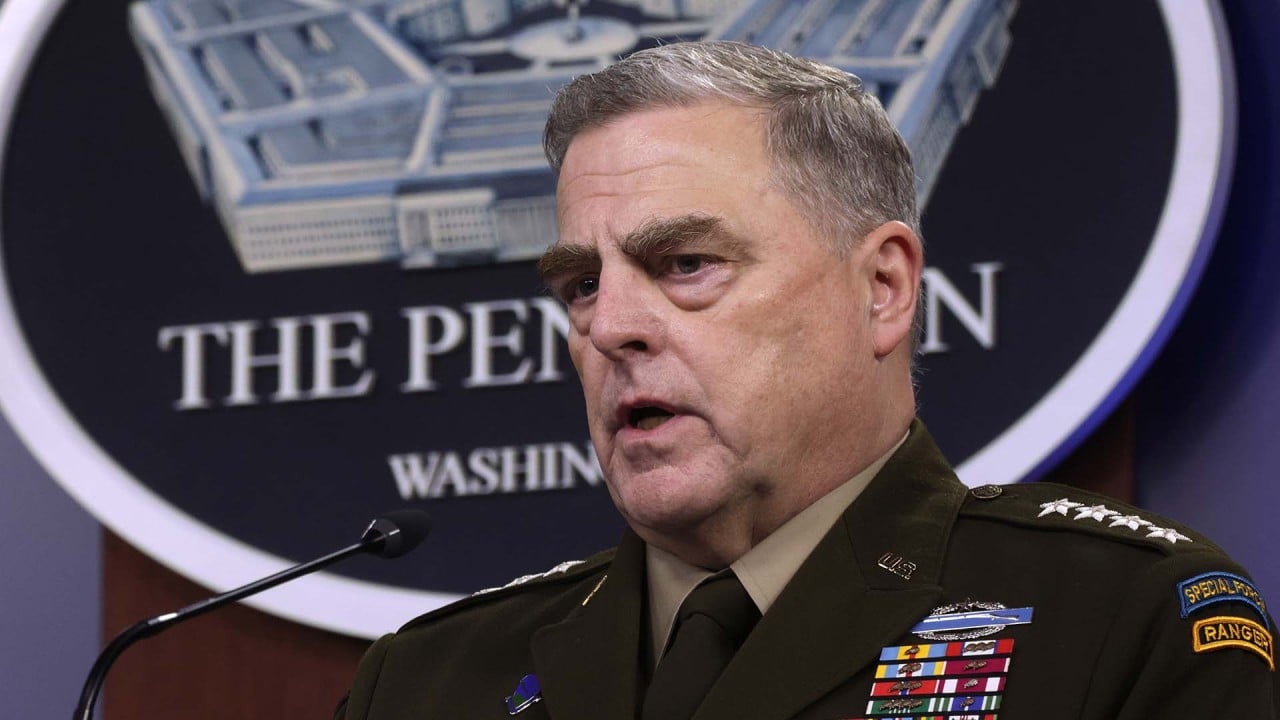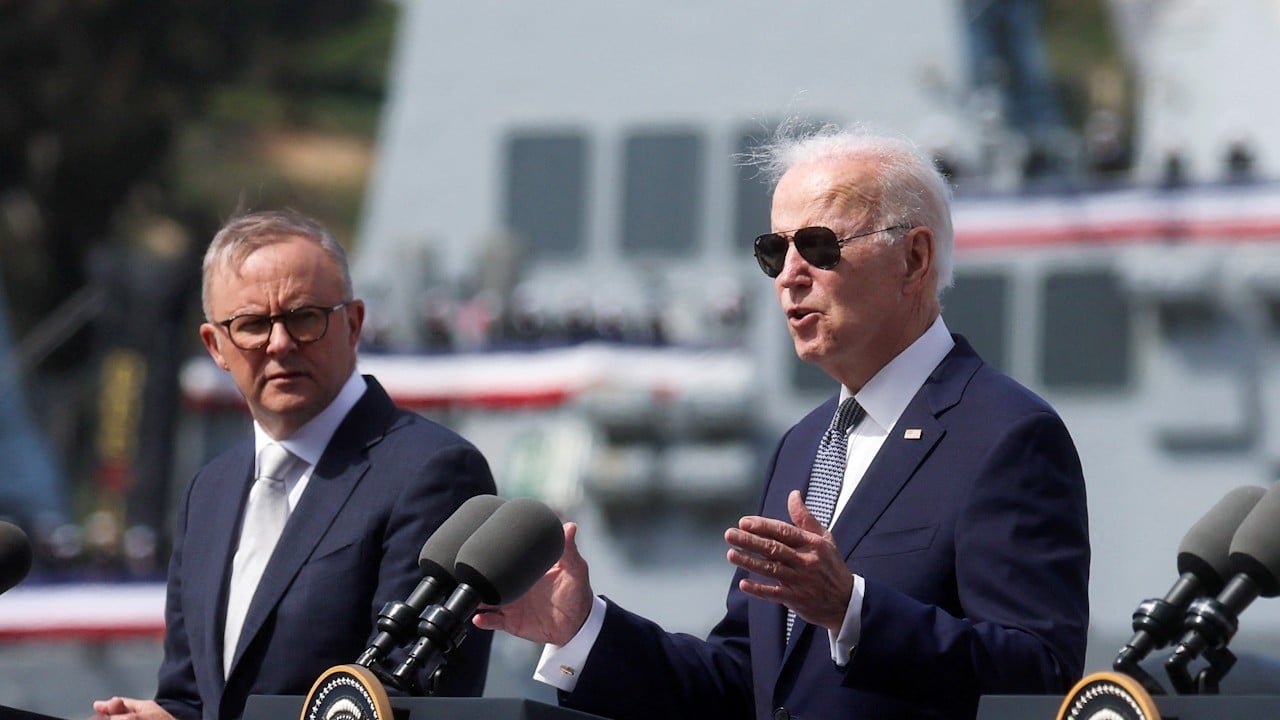
Shangri-La Dialogue puts focus on shifting US-China military balance
- Asian countries are likely to feel pressed between the rivals, with defence chiefs from both countries ready to take firm stance
- In an atmosphere of rising tensions, including heightened military activity in the region, is the momentum tipping in China’s favour?
With the defence chiefs of the world’s two most powerful militaries attending this year’s forum, the regional officials and security analysts heading to Singapore at the weekend may well have Lee’s words from 2019 on their minds.
Whatever happens, their fellow attendees are likely to feel pressed between the weight of two powerful sides as they lay out their positions on the hottest issues concerning peace in the region and beyond.
In an atmosphere of rising tensions between China and the United States on a range of issues, including their growing military presence in the region, Asia’s premier defence summit will be trying to make a cool assessment of the balance of power between the two forces.
China says US must correct ‘mistaken actions’ before top defence chiefs meet
Observers said the military balance between China and the US in Asia was shifting in favour of Beijing, with the People’s Liberation Army rapidly catching up in hypersonic weaponry and other capabilities to compete with Washington in “key battlefields” such as Taiwan.
However, the PLA has yet to bridge the gap in terms of force integration, joint operations and real combat experience and Washington has been strengthening its alliances and partnerships in the region in a bid to stop China gaining the upper hand.
And, while Beijing has a geographical advantage in the Taiwan Strait, an attack on the self-ruled island and a military response by Washington would be very costly for either side to win, according to experts.
During the crisis of 1996, there was nothing Beijing could do when Washington deployed its aircraft carriers to the Taiwan Strait. But those days are gone, leaving only a bitter memory.
More than two decades later, the PLA carrier Shandong was deployed for the first time – heading to the Western Pacific – during a large-scale military exercise surrounding Taiwan after a meeting between Taiwanese President Tsai Ing-wen and US House Speaker Kevin McCarthy.
“The US had an absolute advantage in the 1990s that it could blockade China within the first island chain,” said Zhou Chenming, a researcher at the Yuan Wang military science and technology think tank in Beijing.
“But the PLA rapidly caught up … and we have built advanced weapons and gained our advantage. China now has the capability to compete with the US in key battlefields – not everywhere, but … the East China Sea, South China Sea and Taiwan Strait,” he said.
While observers agree that the US maintains an overall military edge in the region, they say there is no doubt that the PLA has narrowed the gap, even taking the lead in some emerging technologies.
China says PLA Rocket Force joined naval drills near Guam US base
Nevertheless, military power is about more than just hardware and software, according to Collin Koh, a research fellow at the S. Rajaratnam School of International Studies in Singapore.
“It’s also about the doctrine, quality of human capital, training and overall supporting infrastructure,” he said.
Koh said it was true that China had gradually and steadily bridged the military power balance with the US, especially in its hardware. The PLA could also be assessed as ahead of the United States in military applications for AI technology and hypersonic weapons, he added.
“The PLA also has a much more comprehensive ground-based air defence network than the US military possesses, while it certainly has access to a wide plethora of ballistic and cruise missile systems,” Koh said.
Washington has been paying attention to China’s military progress, shifting its main focus in recent years from counterterrorism to major rivals like China and Russia.
In the Indo-Pacific region, the US is shoring up its dominance with an increased military presence, greater investment and closer alliances with regional partners in a clear move to counter Beijing, experts say.
There are growing concerns in the region that there could be a conflict between the rival powers – both with nuclear weapons – in the near term that could be a catastrophe for both sides.
Southeast Asia seeking ‘balance’ between US and China in region
Earlier this month, US defence chief Austin said his “entire department” was focused on continuing to “outpace” China – identified in the Biden administration’s national security strategy last year as “America’s most consequential geopolitical challenge”.
Also this year, Austin announced a request by his department for a 40 per cent increase in this year’s budget to boost its force posture in the Pacific, through better defences for Hawaii and Guam and deeper cooperation with allies and partners there.
China “stunned” the US in 2021, with two tests of hypersonic weapons. With their speed and strong manoeuvrability, the missiles are difficult to detect or intercept and are understood to be mainly useful against aircraft carriers.
In response, the Pentagon has been speeding up its own development of hypersonic weapons systems as a technology priority in the race to keep pace with China and Russia.
The US is also boosting research in areas such as artificial intelligence and cyber warfare.
Meanwhile, the PLA is executing the “largest, fastest, most comprehensive military build-up since World War II in both the conventional and strategic nuclear domains”, according to the most recent assessment by the US Navy’s Indo-Pacific Command.
In an April statement, Indo-Pacific commander Admiral John Aquilino described the accelerated pace at which the PLA had added advanced capabilities as “concerning”.
He noted that the PLA Navy – which has the world’s largest fleet with about 350 battle force vessels – was on track to deliver 440 ships by 2030, with 17 major warships added to its operational inventory last year alone. The US fleet sits at fewer than 300 ships.
Is the US Navy’s ageing fleet opening the window for a PLA attack on Taiwan?
Production capacity for the PLA Air Force’s 5th generation J-20 fighter had also doubled, with an estimated 150 of these aircraft now operational, “many of them fielded last year”, Aquilino said.
In a report last year, the Pentagon also noted that the PLA Air Force was “rapidly catching up” to its US rival.
Beijing think tank analyst Zhou said US hardware “has lost its hardware advantages in some areas, such as hypersonic weapons, anti-ship ballistic missiles, and stealth fighters”.
Chinese scientists war-game hypersonic strike on US carrier group
Drew Thompson, a visiting senior research fellow at the National University of Singapore’s Lee Kuan Yew School of Public Policy, said the two countries were in “more like a race to parity” with Beijing catching up on several fronts.
“The PLA has made considerable advances in power projection capabilities, particularly short, medium and intercontinental-range ballistic missiles, amphibious capabilities, integrated air defence, and critical support capabilities such as electronic warfare,” he said.
But the US may have the upper hand when it comes to regional defence cooperation, following its efforts in recent years to deepen security alliances across the Indo-Pacific region, including through more frequent joint military exercises with regional partners.
In February, the US gained access to a further four military bases in the Philippines, with one close to Taiwan and another near the South China Sea. Washington has also agreed to periodically deploy US nuclear-armed submarines to South Korea and involve Seoul in its nuclear planning operations.
US-Philippines bases deal seen as reaction to China’s actions in South China Sea
The US has strengthened its alliances through bilateral relations as well as military blocs, such as Aukus – the trilateral security pact with Australia and Britain – and the Quad, a strategic dialogue that includes Australia, India and Japan.
Analysts said such alliances should also be considered when evaluating the military balance between China and the US in terms of a potential conflict.
“While it’s by no means guaranteed that all US allies and partners will render support, and to what extent they’ll do so, Washington enjoys a leading advantage over Beijing in this aspect,” Koh said.
“In any potential armed conflict in the region, it’s hard to conceive of a scenario that the US has to go it alone – its allies and partners might be implicated in some way and may participate to varying degrees in support of US military operations.”
Koh said the US also enjoyed “a decisive edge” over the PLA in terms of force integration, joint operations and real combat experience.
“In terms of naval capability for instance, [the PLA] is still in the infant stages of creating a fully-fledged aircraft carrier fighting capability, and the same goes for its ability to conduct large-scale amphibious assault operations,” he said.
Koh noted that the PLA regional theatres were “building up their force integration and joint fighting capabilities within their various constituent branches, and between the various services”.
China blasts US fly-bys after PLA jet accused of ‘aggressive’ move
Former PLA instructor Song Zhongping, now based in Hong Kong, said US military dominance of the Indo-Pacific would continue for a long time yet.
“The US has 11 aircraft carriers and at least five to six of them could be deployed in the Indo-Pacific region,” he said, adding that the United States also had more 5th-generation fighters and a stronger capability for far-sea operations than China.
“Not to mention its nuclear power, which is leading the world,” Song said. “China is also constantly improving its military modernisation, but there is still a certain gap compared with the United States.”
US nuclear umbrella for Taiwan: solid cross-strait shield or wishful thinking?
For Zhou, the US effort to “make full use” of its Asia-Pacific allies – including Australia, Japan, South Korea and some Southeast Asian countries – and its military capability and training levels is “worrying”.
He said it was “wishing thinking” on the part of the US that it can get them together to contain China. “Those allies are too weak to become opponents of China,” he said.
In his report to last year’s Communist Party national congress, President Xi Jinping called for a speeding up of the country’s modernisation with the goal of building a “world class” military by 2050.
Xi ordered the PLA to accelerate the study of informatisation warfare and “build a strong system of strategic deterrence”. He also gave special mention to the development of unmanned, intelligent, and cyber combat forces in the report.
‘A strong country must have a strong army’: Xi’s key lesson from USSR’s collapse
The PLA sees itself as on the weaker side in the overall military balance, according to a Rand Corporation report in March. This was largely because it had made only limited progress in the areas that will define future warfare – informatisation and systems-based operations, it said.
Ex-PLA instructor Song said China needed to overcome its shortcomings, especially its informatisation capabilities.
Beijing was also working to increase its fleet of aircraft carriers and submarines, as well as its nuclear weapons to deter the US, Song said.
The Federation of American Scientists said in its annual survey that China now had about 410 nuclear warheads, while the Pentagon estimates that number could grow to 1,000 by the end of the decade and 1,500 by around 2035 at current pace.
Too fast nuclear build-up by China would worry neighbours: analysts
US Navy secretary Carlos Del Toro called in February for “more modern ships” to reverse the PLA Navy’s significant advantages in overall fleet numbers.
According to Zhou, it would take five to eight years for the US to regain dominance – some aged warships are about to retire and the United States would not be able to keep pace with China in terms of its warship production.
A war game developed by the Centre for Strategic and International Studies, a US think tank, found that in most scenarios based on a Beijing takeover of Taiwan, US, Japanese and Taiwanese forces defeated a conventional amphibious invasion.
However, the defence of an autonomous Taiwan came at a high cost to both sides, the think tank found.
China’s reshuffled military leadership highlights Taiwan focus
In Song’s view, China could one day win a battle in the Taiwan Strait, despite the hardware advantages of the US, because it was “close to its door”, he said.
Zhou said it is possible that Beijing could have the upper hand in a battle over Taiwan, at least in the near future.
“The recent war game by the US clearly shows, in fact, if there is a war between China and the United States, both sides have to pay a big price to win, and an easy victory could not be achieved,” he said.
“The US is concerned about a war in the Taiwan Strait in the next few years. They wish it to happen after 2035 when the US might recover its dominance and by then have a real battle with China.
“But for us, we have our own strategy which is independent of the will of the US.”
Additional reporting by Minnie Chan








